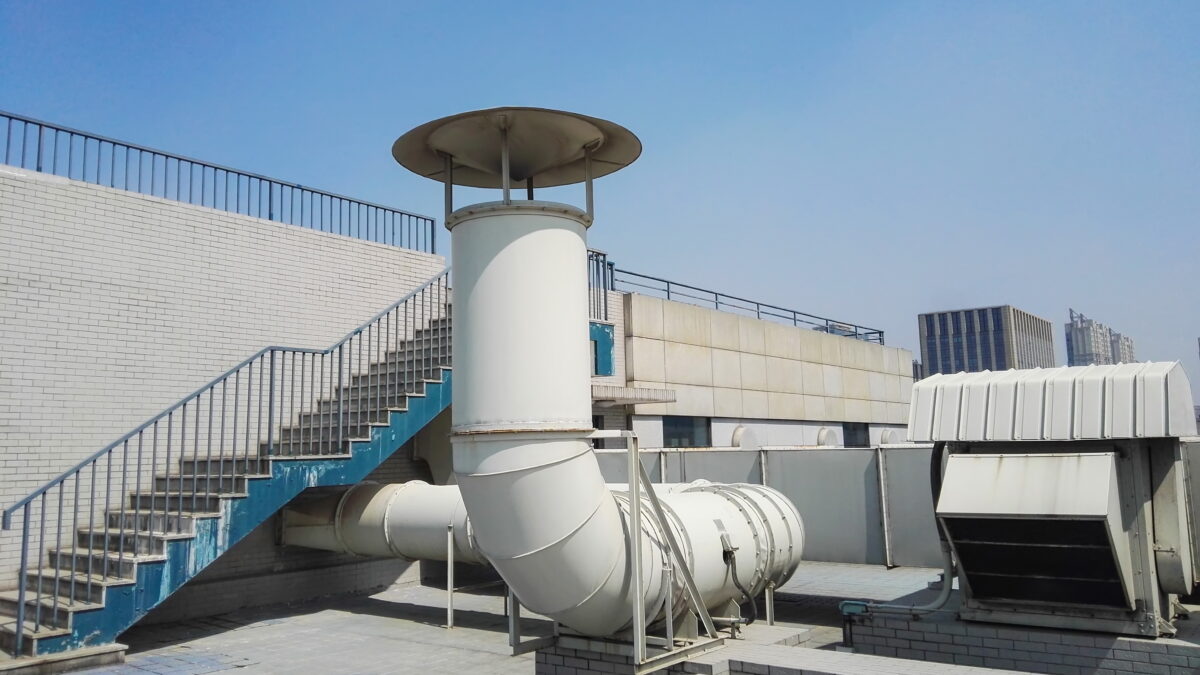The Eminent Use of Industrial Fans to Control Air Pollution | 4 Pollutants Causing Air Pollution in the Cement Industry
Control air pollution in the cement industry has led to an extreme push. The cement industry is one of the world’s largest growing industries. Every year around 4.4 billion tons of cement are produced around the world. The advent of technology has enabled industries to make cement in more quantities than in the past.
The primary air pollution sources in the sector include digging operations, landfills, tips, conveyed belts, crushing mills, and kilns. The cement industry is a significant factor in the environment’s imbalances, especially air quality. The primary environmental pollutants are grey dust, sulfur dioxide, and nitrogen oxides.
As prominent Air Pollution Control Equipment Dealers in Surat, we have put up a guide on controlling air pollution in the cement industry. The blog looks at specific air pollution control techniques that can be utilized for particulate matter categorization, measurement, and control and how efficient energy use can improve air quality.
Pollutants Causing Air Pollution in Cement Industry:
1). Sulfur Oxide
Almost all of the raw materials used to make cement contain sulfur. Sulfur oxides are created during burning sulfur-containing fuel and oxidation of sulfur-containing raw materials. In the presence of sunlight, sulfur oxides released into the atmosphere react with water vapor and other compounds in the environment to produce sulfuric acid. Acid rain is the term for when rain and snow can wash away the produced acid. It lowers agricultural output and increases plant mortality. It can also lead to bronchitis, a respiratory condition.
2). Carbon Dioxide
The cement industry is the largest source of CO2 emissions. According to estimates, the cement industry is responsible for 5% of all CO2 emissions. Fuel combustion and the decarbonization of raw materials result in the production of CO2. Other sources of CO2 emissions include the type of fuel utilized, transportation, and energy from execution to disposal. CO2 is to blame for global climate change and other respiratory illnesses and asthma attacks in humans. CO2 also harms the cardiovascular and nervous systems.
3). Nitrogen Dioxide
Thermal oxidation produces nitrogen dioxide at temperatures ranging from 1200 to 1600 degrees Celsius. Nitrogen dioxide, nitric acid, nitric oxides, nitrates, and nitrous oxides are all members of the nitrogen oxide family. Nitrogen oxide is responsible for a wide range of consequences on people and the environment due to its diverse family of chemicals. As Nitrogen Dioxide and water interact, numerous acidic chemicals are created. These acidic substances cause lakes and water streams to become acidic, which makes it difficult for aquatic species to survive. Additionally, it is to blame for the rise in global temperatures. Respiratory disorders are brought on by breathing in the smog that NOx produces. It causes persistent lung illnesses and breathing difficulties.
4). Volatile Organic Compounds (VOCs)
VOCs are produced by incomplete combustion of the industrial process. Ozone production and soil and water contamination are caused by VOCs. It slows down the growth of plants. Humans experience respiratory tract, eye, and skin irritation as well as headaches, nausea, liver, kidney, and central nervous system damage.
How to Control Air Pollution in Cement Industry?
In the cement business, several ways to Air Pollution Control Devices (APCDs) are used to control the emission of dust and other pollutants into the atmosphere. The kind of dust collectors you employ depends on the particle size, dust loading, flow rate, moisture content, and temperature of the gases.
- Nitrogen emissions can be reduced by up to 30% using process control optimization approaches.
- SO2 emissions can be decreased by lowering its volatility at lower flame and combustion temperatures, as well as by oxidising the atmosphere in the kiln and ensuring its stable functioning.
- Electrostatic precipitators can be used in kilns to cut back on particle emissions.
- Certain fuels and raw materials may include significant quantities of nitrogen, sulphur, heavy metals, or organic compounds, which affect the emission of NO2, SO2, heavy metals, or VOCs, which can be prevented by using appropriate raw materials and fuels.
Use of Industrial Fans to Control Air Pollution in Cement Industry
Industrial Fans are used in as an air pollution control equipment for a long time. The mechanism of industrial fans used to control air pollution in cement industry is simple.
The raw gas enters the filter compartments through inlet ducts outfitted with guiding vanes that distribute the gas evenly throughout the filter bags. With this configuration, a downward gravimeter gas flow is created along the filter bags, causing the dust to precipitate into the hopper below. The flexible industrial fan’s architecture precludes the development of high can velocities, in contrast to filters where raw gas enters through dampers positioned in the hoppers (or vertical, upward gas flow). During on-line cleaning cycles, high gas velocities prevent tiny material from collecting into the hoppers. The cloth filters the outside-in raw gas, and the clean gas exits the bag at the top.
As a competent dealer of Air Pollution Control Equipment and Industrial Fans manufacturer in India, we have deployed several fans and blowers in the cement manufacturing units. If you, too, have queries about industrial fans and their use to control air pollution in the cement industry.
Call Us Today!
Related Posts
Recent Posts
- Solving Ventilation Challenges in the Ceramic Industry with Symbiosis Blowerfab
- Commercial Kitchen Ventilation Systems: A Complete Guide for Restaurants
- 6 Ways Air Washer Systems Enhance Efficiency in Industrial Processes
- 6 Ways to Ensure Adequate Air Ventilation in Battery Manufacturing Industry
- 4 Ways Industrial Blowers and Fans Enhance Efficiency in Automotive Industry




